|
|
 |
|
|
Division Légère de Cavalerie
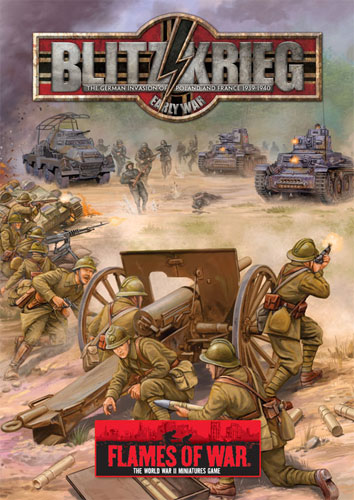 |
Division Légère de Cavalerie
by Jonathan Forsey
The five Division Légère de Cavalerie (DLC) were formed in the winter of 1939-40 to address the need for a more modern, part mechanised formation to act as a screen for French troops. France had three horsed cavalry divisions (DC) prior to this point and all but the 1st Cavalry Brigade of these divisions were disbanded to become partly mechanised and form the nucleus of the five new DLC.
The DLCs were far from divorced from their horse cavalry past, as each still contained a complete horsed Brigade of two battalion strength cavalry regiments. Each also contained the following mechanised elements (there was some variation in practice, noted below):
A Régiment
de Automitrailleuses (RAM) comprising a reconnaissance group (of one
armoured car squadron of excellent Panhard armoured cars and a motorcycle
squadron), and a combat group of one light tank squadron of Hotchkiss H-35 light
tanks and a motorcycle squadron.
|
A regiment of Dragoons Portes (each battalion one automitrailleuse squadron of Renault AMR-33 light tanks, a motorised rifle squadron, and a motorised weapons squadron containing HMGs, 4 x 81mm mortars and 2 x 25mm Anti-tank guns). The motor regiment had only two battalions, rather than three as in the Division Légère Mécanique (DLM) formations.
One light (75mm) motorised artillery regiment, one heavy (105mm) motorised artillery regiment. The motorised artillery regiments comprised two, rather than three groups. Each DLC had a divisional (artillery manned) anti-tank battery of eight 47mm anti-tank guns, and a divisional (cavalry manned) anti-tank squadron of 12 x 25mm weapons. Each also had an aviation unit in an effort to form effective co-operation with aerial reconnaissance, and a Génie (engineer) company.
|
The overall strength was therefore more akin to a
brigade, rather than a division. The role of the DLC was to screen
advances and carry out harrying roles where possible, as well as forming
the rearguard in the case of withdrawal. As originally conceived, the
horsed cavalry element of each division was its main offensive
strength. Experience was to show that, whilst brave and resourceful,
the horsed elements were unable to cope with the requirements of
mechanised warfare.
Left: A French AMR-33.
Read the Blitzkrieg Design Notes here... |
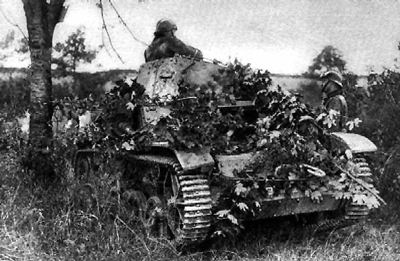 |
The DLCs armour component was just twenty-two
AMR-33 light tanks in the Dragoons Portes regiment and sixteen H-35 tanks
in the reconnaissance regiment, plus the armoured cars.
Note that sources conflict as to the identity of
some of the support elements that formed part of or were attached to the
DCRs outlined below, and also that other formations were added or
removed from the force structure as circumstances required, in a very
fluid tactical situation. The DLCs often operated in conjunction with
the reconnaissance elements of nearby infantry units and with
independent cavalry brigades, which also performed the classic screening
role. |
The Division Légère de Cavalerie
1re DLC
Formed from 1re DC (part), under General d Arras. Attached to 9e Armée, General Corap.
Key formations:
2nd Cavalry Brigade
19th Dragoon Regiment (Régiment de Dragoons - 19e RD) - Horsed.
1st Chasseur Regiment (Régiment de Chasseur à Cheval- 1er RCh) - Horsed.
11th Light Mechanised Brigade
5th (mot) Dragoon Regiment (Régiment de Dragoons Portés - 5e RDP).
1st Reconnaissance Regiment (Régiment d’Automitrailleuses- 1er RAM).
1st Divisional Anti-Tank Squadron (Escadron Divisionnaire Anti-Char- 1e EDAC) (25mm).
Support:
75th All-terrain artillery Regiment (-tracté tout terrain- 75e RATTT).
Divisional Anti-Tank Battery (Batterie Divisionnaire Anti-Char- BDAC) (47mm).
Battery, 409th Anti-Aircraft Battery (de Defense Contre Aeronefs- /409e RADCA) (25mm).
2e DLC
Formed from 2e DC. Commanded by General Berniquet. Attached to 2e Armée, General Huntziger.
Key formations:
3rd Cavalry Brigade
5th Cuirassier Regiment (Régiment de Cuirassiers - 5e RC) - Horsed.
18th Chasseur Regiment (Régiment de Chasseur à Cheval- 18e RCh) – Horsed.
12th Light Mechanised Brigade
3rd (mot) Dragoon Regiment (Régiment de Dragoons Portés - 3e RDP).
2nd Reconnaissance Regiment (Régiment d’Automitrailleuses- 2e RAM).
2nd Divisional Anti-Tank Squadron (Escadron Divisionnaire Anti-Char- 2e EDAC) (25mm).
Support:
73rd All-terrain artillery Regiment (-tracté tout terrain- 73e RATTT).
Divisional Anti-Tank Battery (Batterie Divisionnaire Anti-Char- BDAC) (47mm).
Battery, 409th Anti-Aircraft Battery (de Defense Contre Aeronefs- /409e RADCA) (25mm).
3e DLC
Formed from 3e DC (part), under General Petiet. Attached to 3e Armée, General Condé.
Key formations:
5th Cavalry Brigade
6th Dragoon Regiment (Régiment de Dragoons - 6e RD) - Horsed
4th Hussar Regiment (Régiment de Hussards- 4e RH) – Horsed
13th Light Mechanised Brigade
2nd (mot) Dragoon Regiment (Régiment de Dragoons Portés - 2e RDP)
3rd Reconnaissance Regiment (Régiment d’Automitrailleuses- 3e RAM)
3rd Divisional Anti-Tank Squadron (Escadron Divisionnaire Anti-Char- 3e EDAC) (25mm)
Plus 45th Fortified Region Recce Group (Groupe de reconnaissance de RF- 45e GRRF)
Support:
72nd All-terrain artillery Regiment (-tracté tout terrain- 72e RATTT)
Divisional Anti-Tank Battery (Batterie Divisionnaire Anti-Char- BDAC) (47mm)
4e DLC
Formed on 10 February 1940, under General Barbe. Attached to 9e Armée, General Corap.
Key formations:
4th Cavalry Brigade
8th Dragoon Regiment (Régiment de Dragoons - 8e RD) - Horsed.
31st Dragoon Regiment (Régiment de Dragoons - 31e RD) - Horsed.
14th Light Mechanised Brigade
14th (mot) Dragoon Regiment (Régiment de Dragoons Portés - 14e RDP).
4th Reconnaissance Regiment (Régiment d’Automitrailleuses- 4e RAM).
4th Divisional Anti-Tank Squadron (Escadron Divisionnaire Anti-Char- 4e EDAC) (25mm).
Support:
77th All-terrain artillery Regiment (-tracté tout terrain- 77e RATTT).
Divisional Anti-Tank Battery (Batterie Divisionnaire Anti-Char- BDAC) (47mm).
5e DLC
Formed on 10 February 1940 under General Barbe. Attached to 2e Armée, General Huntziger.
Key formations:
6th Cavalry Brigade
11th Cuirassier Regiment (Régiment de Cuirassiers - 11e RC) - Horsed.
12th Chasseur Regiment (Régiment de Chasseur à Cheval- 12e RCh) – Horsed.
15th Light Mechanised Brigade
15th (mot) Dragoon Regiment (Régiment de Dragoons Portés - 15e RDP)
5th Reconnaissance Regiment (Régiment d’Automitrailleuses- 5e RAM)
Support:
78th All-terrain artillery Regiment (-tracté tout terrain- 78e RATTT)
Divisional Anti-Tank Battery (Batterie Divisionnaire Anti-Char- BDAC) (47mm)
Battery, 409th Anti-Aircraft Battery (de Defense Contre Aeronefs- /409e RADCA) (25mm)
|
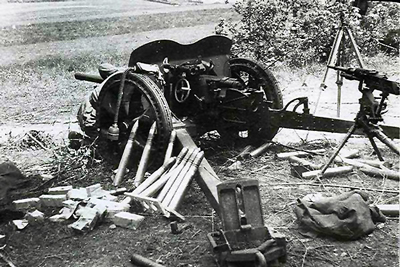
|
Division Légère de Cavalerie in Action
As can be seen from the outlines above, four of the five DLCs were in the armies of Huntziger and Corap. Huntziger’s 2nd Army and Corap’s 9th had two DLCs a piece and because of the strategic situation and the role of these armies, the DLCs were destined to play a major role. The task of these two armies was to act as a static hinge to block the exits from the Ardennes and hold the line of the Meuse River.
Left: A 47mm SA-37 Anti-tank gun.
|
Huntziger had to occupy positions from Sedan to Givet, which his men had moved up to in September 1939. Corap’s forces had to move forward their left and centre to take up
defensive positions along the Belgian Meuse between Givet and Namur, to
make the most of the natural barrier afforded by the river.
Given the critical nature of this hinge to the allied Dyle manoeuvre’s
success, it was unfortunate that much of the forces in 2nd and 9th
Armies were of mediocre quality and had to hold a front that was simply
too long for them. The fact that their sector was to bear the brunt of
the onslaught of Army Group A compounded deficiencies in training and
equipment in some formations, as the French were given little time to
react to the pace of the Blitzkreig. This pressure was to lead to a
torrid time for the DLCs, who were destined to be the first troops into
contact with the invaders.
|
On 10 May, Corap sent his 1re DLC and 4e DLC and Huntziger sent his 2e
DLC and 5e DLC across the French border into Belgium to cover the
movement of 9th Armée up to its new positions. Their role was to screen
this movement and stall any German advance. Their commanders
anticipated that they would be able to stall any German advance for a
period of four days. It was not expected that they would be facing
armoured formations, as the Ardennes area was considered unsuitable for
mass armoured operations. This assumption was to prove incorrect.
Right: French soldiers surrender to the Germans. |
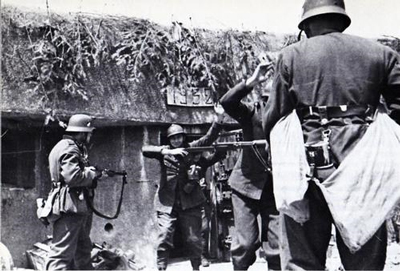 |
1re DLC and 4e DLC, plus the 3rd
Brigade of Spahis (horsed cavalry - 4th Moroccan and 6th
Algerian Spahis Regiments) reached the Ourthe River. 2e DLC and 5e DLC,
however, promptly ran into the advance guard of the onrushing Panzers near
Arlon and, being unable to stop them, fell back. 2e DLC ran into
General Guderian’s left-most Panzer Division at 9am on the 10th,
falling back to the Semois River in the afternoon, delayed by a flood of
Belgian refugees. 5e DLC was
in open countryside in the Neufchâteau-Libramont-Bastogne
area, facing the main body of Guderian’s troops.
On 11 May, it became clear that the Ardennes area was subject to a major German push, rather than a feint or reconnaissance in force. 2e DLC and 5e DLC were faced with overwhelming opposition and suffered heavy losses and driven further back. 5e DLC's positions were broken through by 1st Panzer Division, forcing the cavalry back over the Semois River. As a result of this, General Corap was obliged to withdraw his cavalry screen to the west bank of the Meuse River. By noon on the 11th, it became clear that major German forces were driving on Givet. What the men of the DLCs and supporting Brigades in the cavalry screen could not have realised was that they were facing the might of seven Panzer Divisions!
|
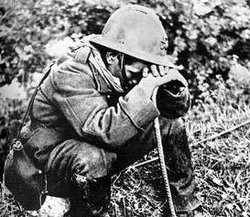 |
Notwithstanding the overwhelming odds, the
cavalry formations did manage to fight a creditable delaying action,
even if not for the four days hoped for. The outmanned and outgunned men
of the DLCs fought a series of sharp rearguard actions under
incredible pressure. Often, retreating cavalry formations withdrew
across bridges shortly prior to their demolition by French or Belgian
engineers. Most importantly, they withdrew in good order and managed to
blow the Bridges across the Meuse River after crossing them on 12 May,
denying them to the invaders.
Left: A French soldier after the battle.
|
However, the 7th Motorcycle battalion of General Erwin Rommel’s 7th Panzer Division managed to cross the Meuse at an inexplicably unguarded weir at Houx on the evening of the 12th. This bridgehead, with significant Luftwaffe support, withstood a counterattack by 4e DLC on 13 May. The bridgehead grew and, by evening, German sappers were constructing a bridge across the river.
At Monthermé, near the junction of the Meuse and Semois Rivers, the 6th and 8th Panzer Divisions eventually forced a crossing, though they were held up by stout defence. The Meuse line was crumbling. Along with the formations they had been screening, the DLCs were forced into a retreat. On 13 May, the Germans expanded their bridgeheads over the Meuse and on 13-14 May succeeded in smashing through defensive positions at Sedan and was soon across the Meuse in force. The DLCs retained their morale and integrity, but could do little to stem the flood and the accelerating collapse of the French defensive positions.
|
14 May saw 5e DLC and another cavalry brigade holding positions on the Bar river, but the Division had suffered heavy losses in the Ardennes fighting. 15 May saw the dawning realisation by the French that the Panzers had broken through the defensive crust and the swift surge of German formations toward the coast north of the Somme to isolate the French formations that had been operating in Belgium and Holland, along with the British Expeditionary Force.
Right: British tankers rush to mount their vehicles.
|
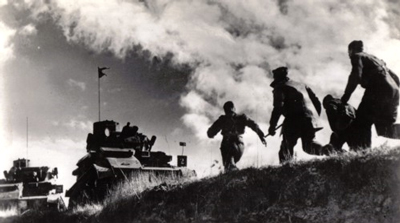 |
The French deployments meant that there was no
reserve to stem the tide. The DLCs fell back to the South, fighting an
exhausting series of rearguard actions where possible. 2e and 5e
DLC were allocated supporting roles in the unsuccessful attempt by the
British 1st Armoured Division to capture the Somme bridges on 27 May.
The Fate of the Division Légère de Cavalerie
Their withdrawal meant that they did not suffer the fate of the DLMs which were destroyed in the retreat to Dunkirk. They were depleted and exhausted, but not destroyed and went on to form the cadre of new formations hastily put together to face the renewed German onslaught.
The beginning of June 1940 saw the French in a parlous state in terms of their position generally, but in a particularly poor state in terms of armoured formations. The remnant DLCs were selected as the cadre around which to base five new DLM light mechanised divisions.
|
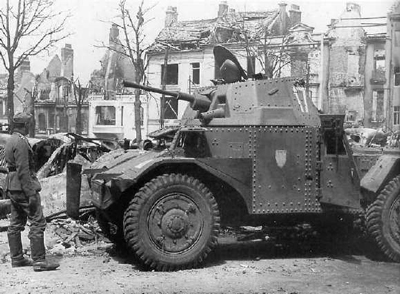 |
A new 1st, 2nd and 3rd DLM were, in theory at
least, created from scratch. The remnants of the DLCs, which varied in
strength but which had all retained their structure to a certain
degree, were to be converted to reduced strength DLMs as follows:
1re DLC as 4e DLM
2e DLC as 5e DLM
3e DLC as 6e DLM
4e DLC as 7e DLM
5e DLC as 8e DLM
Left: A French Panhard armoured car.
|
| In the event, the rapidity of the German advance and the chaotic state of the reorganisation meant that only 4e and 7e DLM were formed based around the cadre of the respective DLC’s. 4e DLM was also formed from the remnants of 17e GRCA, 2e GRDI and autonomous motorcycle and armoured car units. |
As formed, 4th DLM (Gen. Leyer) included:
5th (mot) Dragoon Regiment (Régiment de Dragoons Portés - 5e RDP).
1st Chasseur Regiment (Régiment de Chasseur - 1e RCh) – Infantry.
1st Reconnaissance Regiment (Régiment d’Automitrailleuses- 1er RAM) with approximately 12 armoured cars.
Two batteries of 75mm field guns (8 guns total).
Approximately 10 Souma and 10 Hotchkiss tanks of varying serviceability.
The makeshift formation was added to the strength of 7th Army on 10 June 1940. It became involved in covering the retreat of that army from Epernay to Meaux.
7e DLM drew heavily on the cadre of 4e DLC units, the horsed units being hastily re-equipped. It was created on 5 June under general Marteau, and included the following:
14th Light Mechanised Brigade (14e BLM)
4th Reconnaissance Regiment (Régiment d’Automitrailleuses- 4e RAM) with 10 Panhard armoured cars and 14 AMR light tanks remaining
8th Dragoon Regiment (Régiment de Dragoons - 8e RD) – with 20 Hotchkiss H-35 and 20 Hotchkiss H-39 tanks.
4th Divisional Anti-Tank Squadron (Escadron Divisionnaire Anti-Char - 4e EDAC) (25mm)
4th Motorised Cavalry Brigade (4e BCM)
14th (mot) Dragoon Regiment (Régiment de Dragoons Portés - 14e RDP), including Laffly 50AM armoured cars.
31st (mot) Dragoon Regiment (Régiment de Dragoons Portés - 31e RDP), including Laffly 50AM armoured cars.
Support
77th All-terrain artillery Regiment (-tracté tout terrain- 77e RATTT).
Divisional Anti-Tank Battery (Batterie Divisionnaire Anti-Char- BDAC) (47mm).
|
7e DLM was attached to the
2nd Army, and formed an armoured group south of the Aisne River
along with 3e DCR under General Buisson. The group was thrown against the onrushing
panzers of 1.PzD and 2.PzD in the area of Rethel, becoming involved in heavy
fighting in the period of 10-11 June.
Efforts to throw back the invaders failed and 7e DLM found
itself constantly engaged, inflicting losses on the advancing Germans but
suffering in turn through encirclement and attrition until the armistice on 25
June.
Division Légère de Cavalerie in Flames Of War
DLCs, or at least the mechanised parts, can be represented by the following lists from Blitzkrieg, with the equipment choices specified to reflect the composition of the DLCs as set out in more detail above. British Armoured Platoon support would not be available for the DLCs deployed north of the Somme, but 2e and 5e DLC were allocated supporting roles in the unsuccessful attempt by the British 1st Armoured Division to capture the Somme bridges on 27 May, so allowing a British Armoured Platoon in support could represent that deployment.
Escadron de Fusiliers Portés (page 148): no Medium Combat Platoon, use Deep Reconnaissance Platoon options.
Escadron de Reconnaissance (page 152): no Medium Combat Platoon, use Deep Reconnaissance Platoon options.
Escadron de Fusiliers Motocyclistes (page 156): no Medium Combat Platoon, use Deep Reconnaissance Platoon options.
Check out the French Early-war range in the online store here...
~ Jonathan.
|
Want To Know More About Blitzkrieg?
Over the past few months we have added a massive range of articles
about Blitzkrieg to the website, to make it easier for people to find a
specific article we have put together this handy place.
Find out more about Blitzkrieg and Early-war here... |
Last Updated On Friday, July 15, 2011 by Blake at Battlefront
|
|
|